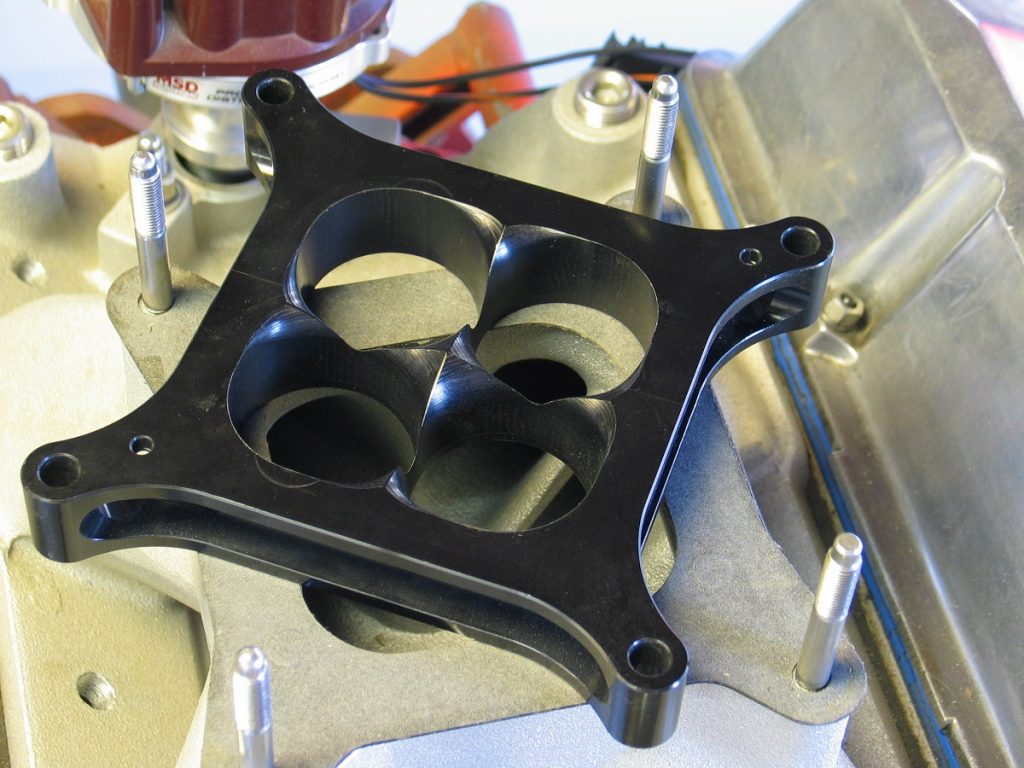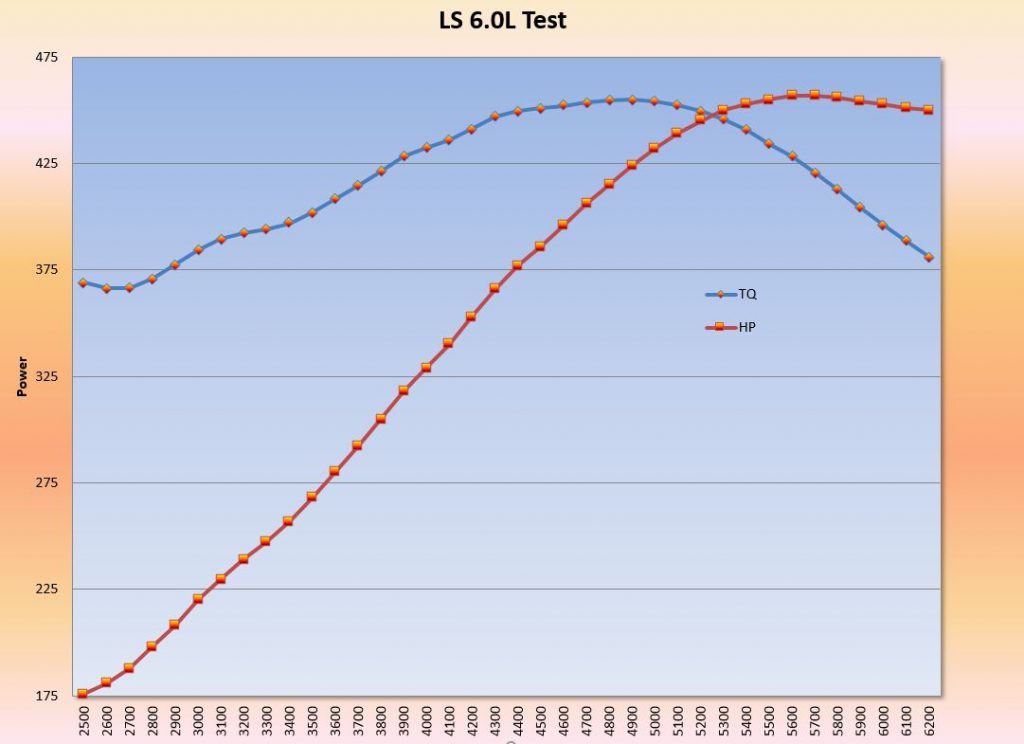
I’ve been reading you for years at various magazines like PHR, Hot Rod, and Car Craft. I’ve been curious about the lower end of the torque curve. Looking at various HP/TQ graphs over the years, I’ve noticed a torque dip between 2,500 rpm and 3,500 rpm. Is this excess early advance, or what? Should torque build smoothly with EFI type controls? I live for acceleration from lower rpm. How do we get the most bang for our buck down low? — J.S.
…
Jeff Smith: This is a great question but is also a fairly complex subject with interconnected pathways. Let’s see if we can keep it simple while attempting to answer your question.
Let’s start with peak torque. This is the spot where the engine is the most efficient at making cylinder pressure. Below this point, the variables of cam timing, intake manifold design, and a dozen other factors are not in sync.
Above peak torque, there’s less time to fill the cylinder with air and fuel so cylinder pressure is reduced, but since the engine is spinning faster, work is accomplished in a shorter period of time, which makes more horsepower.
For the sake of discussion let’s place the torque peak at 4,000 rpm on a mild street engine. If we start our dyno pull at 2,500, often you’ll see this little spike right at 2,500 and then the torque will dip. I know this isn’t what you’re asking about but since we’re there anyway let’s hit that too. There is often a tiny spike when the brake releases that stored energy into the absorber and it spikes the sensor so it always reads a little higher than what the engine is actually making.
The dip you are referring to is often seen in dyno-curve graphs — especially from engines with longer duration and more overlap. At very low speeds, the engine can in essence “over scavenge” the intake and cause a loss of torque. Let’s look at exactly what’s happening in this situation.

All camshafts use overlap to improve performance. This is the period when the exhaust valve is closing and the intake valve is opening. Depending upon the lobe duration and lobe separation angle (LSA) this can either be quite a bit of overlap or very little. Let’s assume we have a tight lobe separation angle of 108 degrees. This creates more overlap than a LSA of 114 degrees.
Increased overlap improves breathing from around peak torque all the way through to the peak horsepower point. This works through a complex situation of reflected low-pressure waves in the exhaust. A reflected wave is created as the exhaust exits a pipe. It is a reflected negative pressure wave that travels toward the engine yet allows exhaust particles to travel downstream (away from the engine). If timed properly, this negative pressure wave arrives while both intake and exhaust valves are open and this low-pressure situation in the cylinder draws more air and fuel into the cylinder.
This wave has to be carefully tuned to arrive at the proper time. The timing of this reflected wave involves many variables including valve timing, overlap, header primary pipe diameter and length, the amount of restriction (backpressure) in the exhaust, intake manifold runner length, intake cross-section, intake runner taper, and many more.
Combining or coordinating all these variables to work at a given point is extremely difficult.
My theory is that most engine builders assemble a combination and then attempt to improve the situation by subtly changing variables like intake runner length, header primary pipe length, and other things that are relatively easy to modify.
As an example, if we were to test a set of short, block-hugger headers against a set of long-tube headers, the low-speed torque in the rpm range below peak torque would likely improve with the longer primary tube headers while not really affecting the top-end power all that much. The longer header primary pipe length — around 32-26 inches really helps.
Another area we tested was collector lengths.
We had two different headers, both with the same primary pipe diameter of 1¾ inches. One set had primary pipes that were exactly the same length within less than ¼-inch. The primary lengths on the second set of headers were not even close — some pipes were as much as 3 inches shorter than others. The other difference was that the equal-length headers used a short collector while the unequal-length headers had a much longer collector length.
This test was initiated to test unequal- vs. equal-length headers. The theory is that equal-length primary tubes will increase peak horsepower. Unfortunately, our test revealed the peak power was the same. But the unintended consequence this test revealed was something far more interesting. The unequal-length headers produced roughly 15 to 20 ft.-lbs. more torque below the peak torque rpm point compared to the headers with the shorter collector. This is not new information — but it is often overlooked.
The easy way to improve low-speed torque on street engines is by doing just this — increasing the length of the header collector.
This is one reason to run a 3-inch pipe from the collector (on a small-block for example) up to the muffler and then run a 2 ½-inch tailpipe to keep down the resonance, which can be bad in a full 3-inch system. We know this because we have a full 3-inch system on a Chevelle and it drones horribly at around 2,000 rpm.
To further answer your question, I’ve seen dyno tests where the low-speed torque improves (and sometimes becomes worse with a dip) just by changing mufflers. We experienced an interesting example of this just a few weeks ago. I loaned my carbureted, small-block Chevelle to Borla so they could do some muffler testing. The car had chambered mufflers and when we changed to a Borla straight-through muffler, the car experienced a definite hesitation that was only slightly noticeable with the chambered mufflers. The reason is that the Borla mufflers created less backpressure at even this low engine speed. With less backpressure, airflow through the engine increased and the carburetor now was a bit lean on light acceleration. This is a small example, but it clearly shows the effect of even slight exhaust changes to the combination.
Because of the complex interrelationships of the entire engine package, it’s difficult to point to any one part that will tend to eliminate this low-speed torque dip. As yet another example, in a discussion with Keith Wilson several years ago, he mentioned that the reason he developed those tapered carburetor spacers was an attempt to improve part-throttle tuning on a Trans-Am car. Wilson says the tapered spacers made a major improvement in that combination. We tried them on a carbureted small-block Chevy 383 c.i.d. and saw a major peak horsepower increase. But on a different test at low-speed on a big-block Chevy with a single plane intake, we saw almost no change. The point is that in certain applications these spacers can help — but in others they may not. The only way to know is to try them on your combination. These are easy to test because you only need longer carb studs to test them — assuming you have sufficient hood clearance.
Keep in mind that to fully evaluate the change — regardless of what you change — you may need to make a significant fueling change to fully appreciate the modification. In other words, just adding the spacer may require a jetting change. This means using a wide-band oxygen sensor like those from Innovate Motorsports to truly evaluate the change. If by adding the spacer, for example, the engine runs leaner, then it will require a fueling modification to bring the air-fuel ratio back into the proper range in order to know if the change was positive or not.
This answer, as usual, became longer than I intended, but it’s important to understand a little bit of what happens inside an engine. These are complex interrelationships between parts and there are precious few engine builders who really understand even a portion of all this. But that’s what makes it fun!

You want low-end torque? Install a Pontiac V8! ;>)
Amen. Brother!
Been driving a Pontiac since 61 when my dad’s started with a Star Chief, It always got a jump on the start, got beat a few times but never on the bottom end.
Later 63 Cat his monster Bonny 455.
Me a 67 & 69 GTO 49 years, have yet to find others that have the bottom end as a basic stock Pontiac
Run your cam 4 degrees advanced. Use smaller valve heads. Install long-rod pistons. Unfortunately the first two will sacrifice hp on the top end.
Outstanding explanation of a complex subject.
Years ago, I built a Pontiac 400 for my GTO with the intent to have abundant low end and mid range torque. Part of that effort was using turbo-type mufflers with a parabolic reflector inside that was directly inline with the collector of the header. The intention was to use the reflected wave pulse for increased exhaust scavenging in the lower rpm ranges. I did not have access to a dyno for a before and after comparison, but the car did have a noticeable increase in low end power and the throttle response was excellent. When I kicked in passing gear around 40-45 mph, it would chirp the rear tires – which it never did before. I’ve wondered over the years if anyone ever did any testing in this area.
Give a disertation on variable duration lifters.